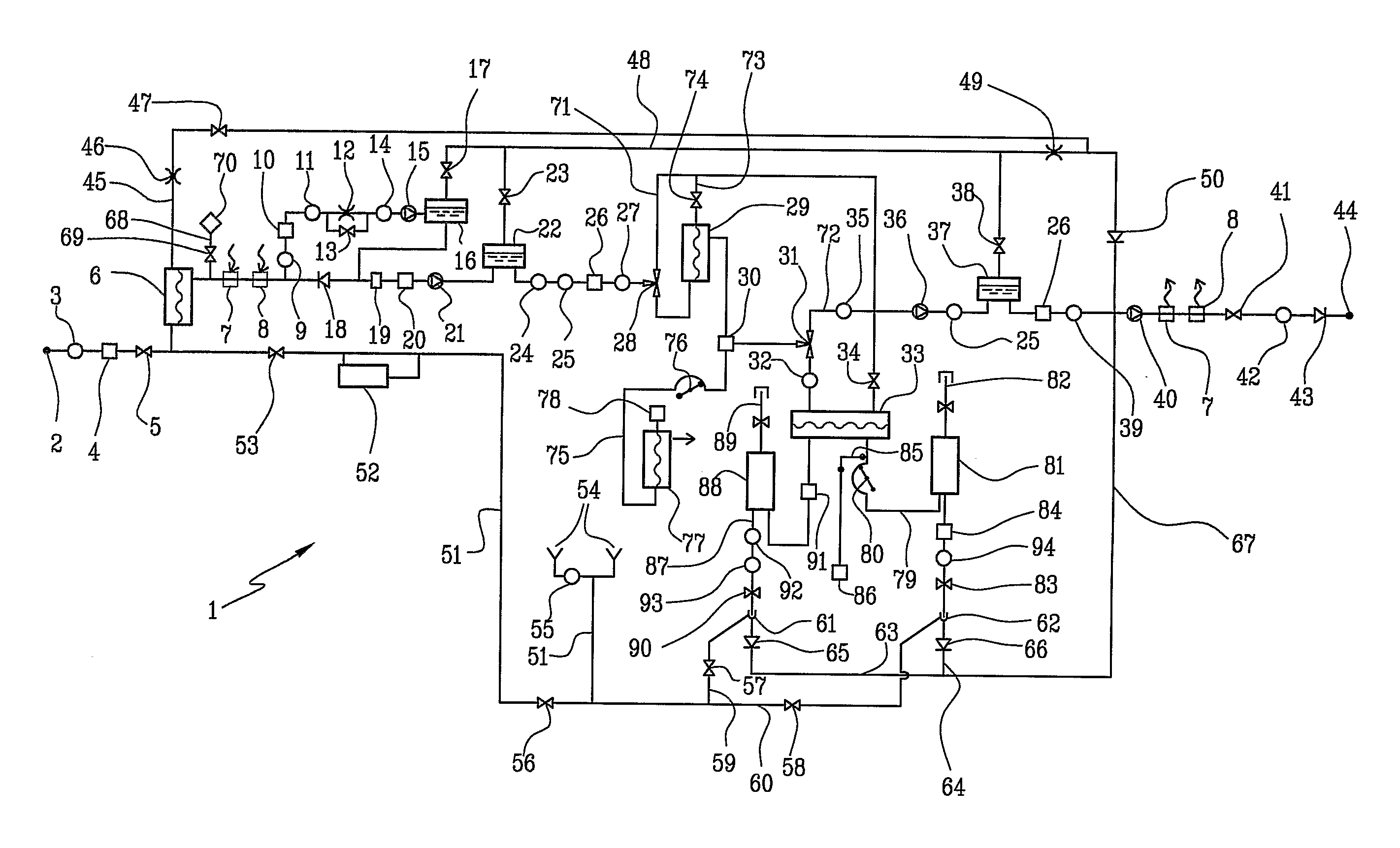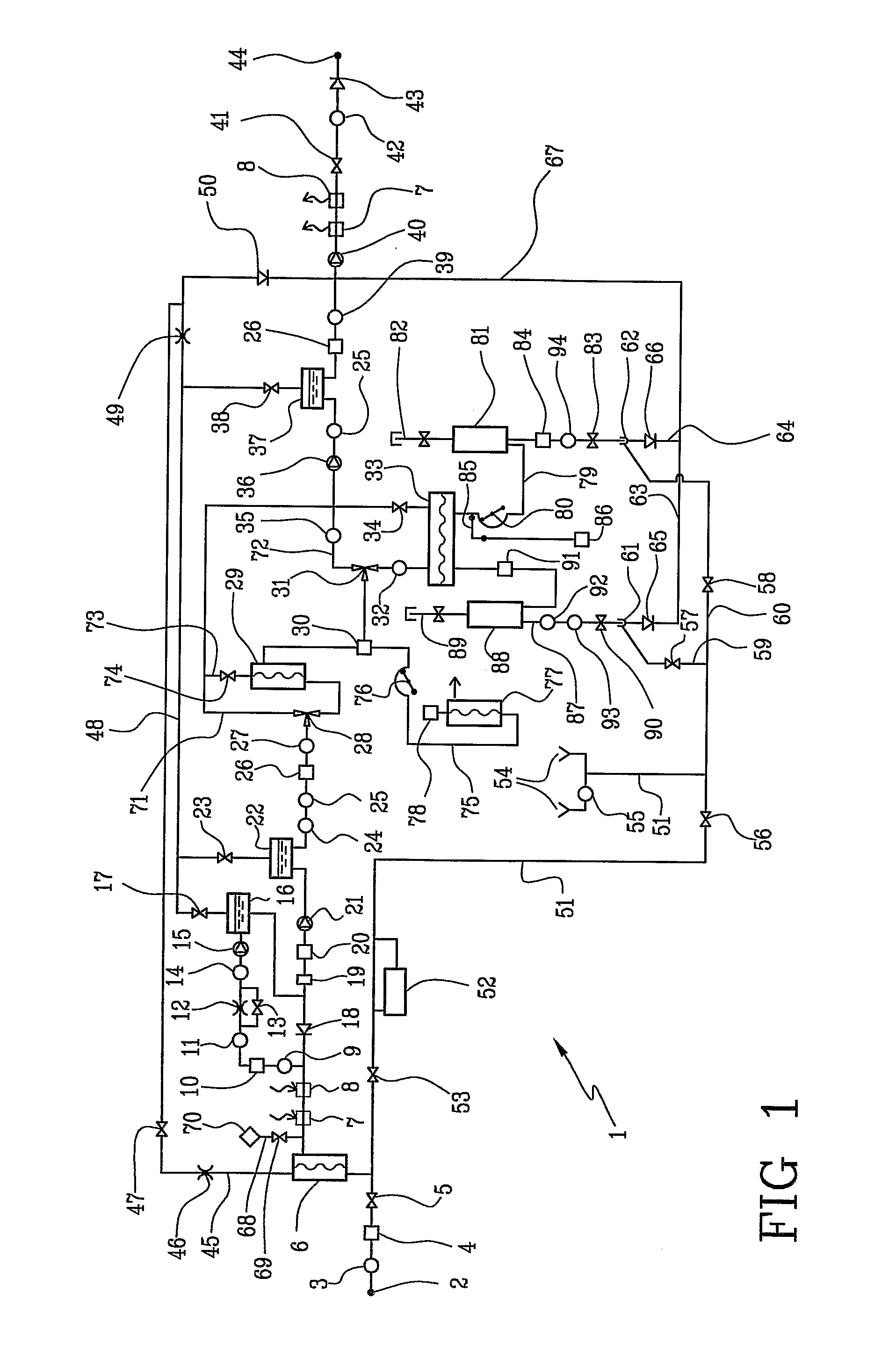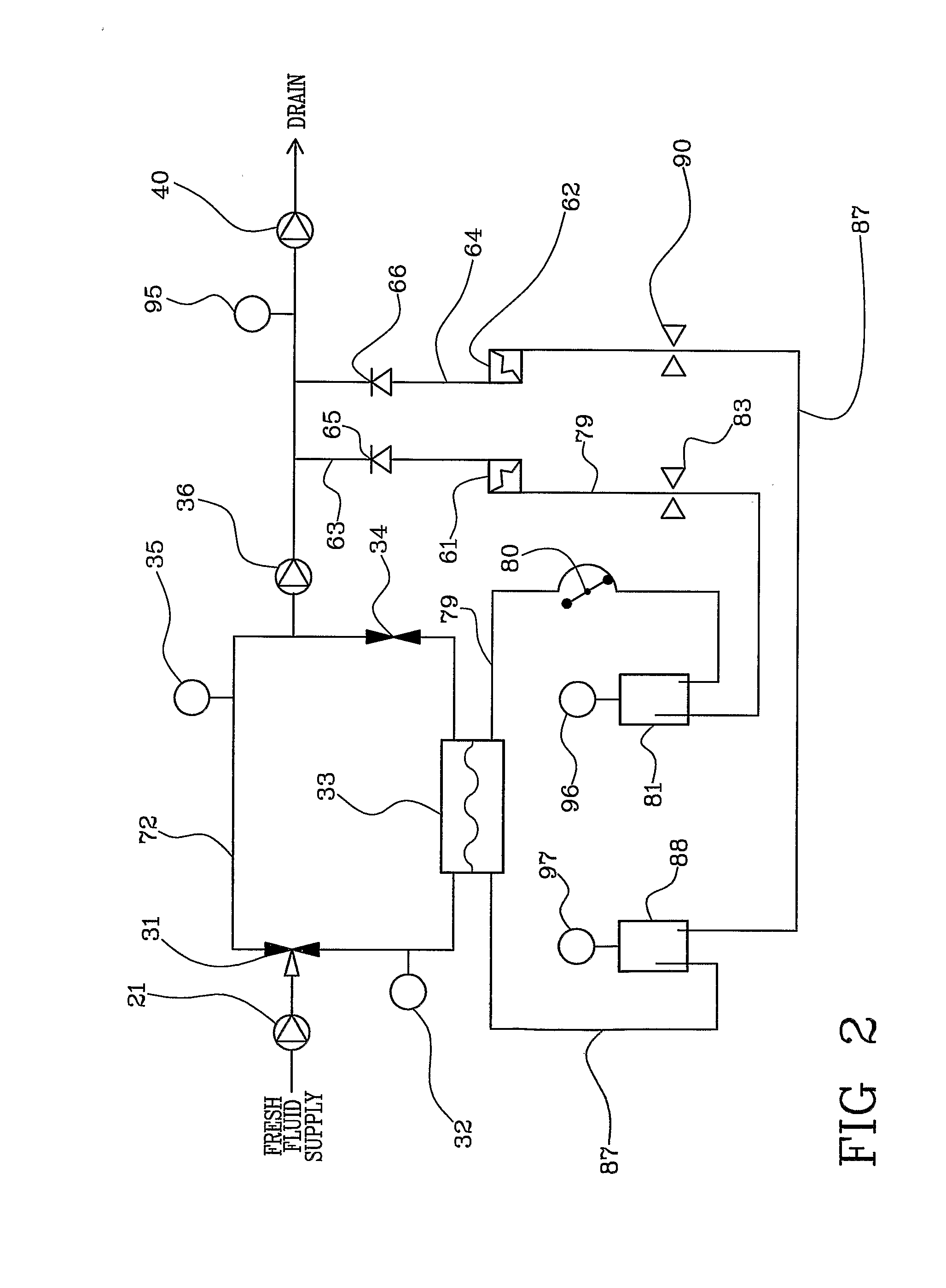Method and apparatus for priming an extracorporeal blood circuit
a technology of extracorporeal blood and circuit, which is applied in the direction of suction devices, other medical devices, and receipt systems, etc., can solve the problems of increased work hours, increased work hours, and extra work for operators, so as to facilitate the operator's task, avoid recirculating stage, and reduce work time and error risk
- Summary
- Abstract
- Description
- Claims
- Application Information
AI Technical Summary
Benefits of technology
Problems solved by technology
Method used
Image
Examples
Embodiment Construction
[0023]With reference to FIG. 1, 1 denotes in its entirety a hemodiafiltration apparatus, 2 an inlet end connected to a water source, 3 a pressure sensor at the inlet, 4 an inlet pressure regulator, 5 an on-off valve at the inlet, 6 an ultrafilter for the water at the inlet, 7 a first heat exchanger, 8 a second heat exchanger, 9 a flow sensor or a sensor of the presence of a flow (or a flow switch) at the inlet of the heating and degassing circuit, 10 a heater, 11 a temperature sensor in the heating and degassing circuit, 12 a degassing choke or restrictor, 13 a bypass valve of the degassing choke or restrictor, 14 a pressure sensor for controlling the degassing pump, 15 a degassing pump, 16 a first gas-liquid separator in the heating and degassing circuit, 17 a first degassing valve connected to the vent of the first gas-liquid separator, 18 a check or non-return valve for the heating and degassing circuit, 19 a pressure regulator at the outlet of the heating and degassing circuit, ...
PUM
 Login to View More
Login to View More Abstract
Description
Claims
Application Information
 Login to View More
Login to View More - R&D
- Intellectual Property
- Life Sciences
- Materials
- Tech Scout
- Unparalleled Data Quality
- Higher Quality Content
- 60% Fewer Hallucinations
Browse by: Latest US Patents, China's latest patents, Technical Efficacy Thesaurus, Application Domain, Technology Topic, Popular Technical Reports.
© 2025 PatSnap. All rights reserved.Legal|Privacy policy|Modern Slavery Act Transparency Statement|Sitemap|About US| Contact US: help@patsnap.com



